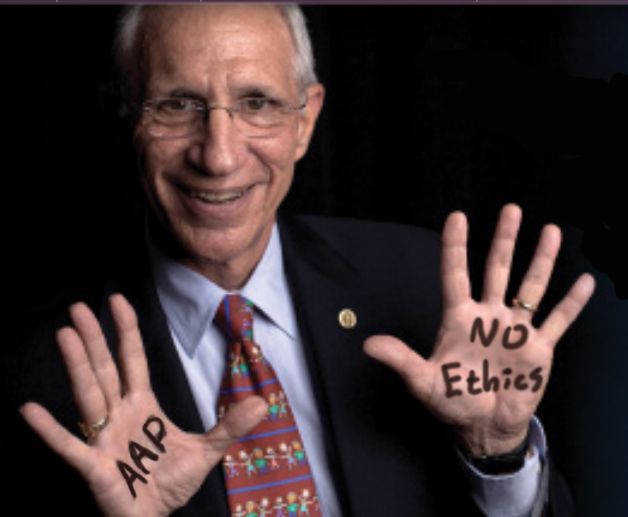Jun 23, 2023
May is Masturbation Month. If you missed it, you can always indulge belatedly!
Intact America followers probably know that circumcising boys (and even girls) by doctors began around 150 years ago as a “remedy” for masturbation. Victorian era doctors believed that onanism (another term for masturbation) could cause lunacy and many other diseases, both moral and physical.
Journalist David Gollaher, in his book Circumcision: A History of the World’s Most Controversial Surgery, writes about how cereal magnate John Harvey Kellogg “recommended performing circumcision ‘without administering an anesthetic, as the pain attending the operation will have a salutary effect upon the mind, especially if connected with the idea of punishment.” Other doctors in the late 19th century advocated for the use of blistering fluids on the genitals (of boys as well as girls) to both deter and punish self-pleasuring.
Amazing, isn’t it, that this history has been lost on those who deny that circumcision harms boys and men?
If you’re over 50, you probably remember the brouhaha when Surgeon General Joycelyn Elders in 1994 talked publicly about masturbation as a natural and positive human behavior. She was ridiculed and eventually resigned from her post, but not without removing some of the stigma surrounding the subject. A year later, the sex shop Good Vibrations declared May National Masturbation Month. Put it on your calendar, but no need to wait until next year to celebrate!
Oct 25, 2021
This letter to the editor was published in The New Yorker on October 25, 2021.
Kudos to Shteyngart for bravely exposing the harm that can be caused by circumcision. His heartbreaking personal struggle, while extreme, is more common among circumcised men than the public has been led to believe. Since 2008, when I co-founded Intact America, an organization that seeks to change the way people in this country think about circumcision, I have heard from thousands of men who have suffered lifelong physical and psychological damage from the procedure. According to a 2019 report published in the Journal of Pediatric Surgery, in the U.S., where nearly all circumcisions take place in medical settings, eleven per cent of pediatric-surgery malpractice cases involve circumcision. Yet American doctors and hospitals keep putting babies at risk with a medically unnecessary procedure that is not routinely performed on male children in any other Western country. We must ask why we allow doctors and hospitals to profit from cutting the genitals of male children even as we fight to outlaw female genital cutting, here and abroad.
Georganne Chapin

Jul 30, 2021
Men circumcised as babies are 4.5 times more likely to experience erectile dysfunction than intact men. Learn more.
#fridayforeskinfacts #circumcision #erectiledysfunction #ED

Feb 21, 2016
Last week, Intact America launched a petition to the American Academy of Pediatrics (AAP). The petition demands that the AAP follow the recommendations from its own research about infant pain, and tell its doctors to END THE PAIN and stop circumcising baby boys. Our goal is 29,000 signatures by February 29. We need your help! Please sign this petition, and share it with your friends. Ask them to sign and share it, too!

Intact America insists that the American Academy of Pediatrics issue a new circumcision policy—one that honors and protects baby boys from harm.
The American Academy of Pediatrics (AAP) recently said that babies shouldn’t be subjected to unnecessary pain. But the AAP continues to promote “routine” infant circumcision, a painful, medically unnecessary surgery that removes a normal part of a baby’s penis.
Last month, the AAP published research showing that common medical procedures carried out on newborn babies are very painful, and that the effects of the pain can last many years. The procedures mentioned included heel sticks, insertion of IV needles, and circumcision. The AAP report also found that commonly used pain relievers are neither effective nor safe.
Infant circumcision differs from the other procedures discussed in the report in that it is an invasive surgery that neither tests for nor treats any illness, and permanently removes a natural and valuable part of a boy’s sexual anatomy – the foreskin. The pain from circumcision is intense and continues for days or weeks after the surgery.
Circumcision, originally promoted in the 19th century as a way to prevent masturbation, has become part of American medical culture. Every year, a million baby boys in the United States are subjected to this surgery, although no medical association in the world recommends it.
Some of the falsehoods currently used to support circumcision include hygiene, disease prevention, and aesthetics.
The truth is:
- The intact penis is easily cleaned throughout a boy’s and man’s lifetime.
- Circumcision does NOT prevent sexually transmitted diseases, including HIV. European countries where fewer than ten percent of all men are circumcised have about the same STD rates as the United States, where circumcision is common.
- Any preference expressed by men or women for the circumcised penis is a result of cultural conditioning. Besides, as the U.S. circumcision rate declines, and the number of intact boys and men grow, the intact penis will no longer seem strange or unattractive.
Many Americans also believe that circumcision is “just a snip” – a minor, brief, and painless procedure that babies will not remember. This is FALSE, and the new AAP article on pain proves it.
Because circumcision is NOT medically necessary, and because the pain it causes is unmanageable and harmful over the long term, Intact America demands that the American Academy of Pediatrics tell its doctors to end the pain and stop circumcising baby boys.
Help us reach 29,000 signatures by February 29, 2016.
Please sign our petition TODAY.
Apr 8, 2014
In a new “listicle” posted on its website this week, The Huffington Post outlines Eight Things America Gets Wrong About Sex. From health care to homophobia, the piece covers a range of historical and sociological reasons for America’s sexual dilemmas. It speaks to just about everything, except anatomy. And what’s one thing about American sexual organs that’s unique compared to much of the rest of the world? That’s right—routine male circumcision.
It astonishes me that in talking about sex, pretty much nobody mentions that most adult men in the United States today have been deprived of the most pleasurable, sensitive part of their penises. Without a foreskin and its sensory feedback, a man has difficulty controlling the timing of his orgasm. Also, because he’s missing the very organ that serves a gliding and lubricating function—and because he has a scar where his foreskin used to be—his penis is calloused and dry, when compared to that of an intact man; this creates a friction during intercourse and compromises the pleasure of both sexual partners.
Don’t believe me? Then explain the uniquely American proliferation of lubricants and masturbation creams, the existence of which many Europeans—most of whom are intact—find strange. CIRCUMserum is available for those who want to combat what it calls “Dullness Syndrome” by restoring “natural feeling for more intense sex”; Stroke 29, Wicked Cream, and others are designed to help circumcised men seeking solitary pleasure, who find the after-effects of circumcision to stand in the way of sensory pleasure.
Understanding the history of American circumcision helps to explain all of this. In fact, when doctors began promoting circumcision in the Victorian era (late 1800s), the purpose was precisely to reduce pleasure and cause pain–to dissuade men from the “immoral” and “unhygienic” practice of masturbation. Among those who pushed the circumcision solution to masturbation were American physicians Abraham Jacobi (the organizer of the American Pediatric Society) and J.J. Moses (then-head of the New York State Medical Society and president of the Association of American Physicians).
the history of American circumcision helps to explain all of this. In fact, when doctors began promoting circumcision in the Victorian era (late 1800s), the purpose was precisely to reduce pleasure and cause pain–to dissuade men from the “immoral” and “unhygienic” practice of masturbation. Among those who pushed the circumcision solution to masturbation were American physicians Abraham Jacobi (the organizer of the American Pediatric Society) and J.J. Moses (then-head of the New York State Medical Society and president of the Association of American Physicians).
Just as Jewish physician and philosopher Maimonides had recognized 800 years earlier, these fathers of American medicalized circumcision believed that its physiological and psychological effects–aversive pain memory and loss of sensory tissue–would help to diminish sexual gratification, whether self-sought or through genital contact with a partner.
Should we be surprised, then, with findings such as those from Denmark, published in the International Journal of Epidemiology in 2011, showing that circumcised men have greater difficulty reaching orgasm, and that female partners of circumcised men are less likely to feel sexually satisfied?
What is astonishing is that American doctors persist in a practice designed to ruin the natural pleasures of sex, and then deny that it in fact does so. Meanwhile, the vast majority of adult American men are living with scars instead of foreskins. Half of the couple is missing a most basic, sensual part of his anatomy, and we wonder why Americans find sex less than fulfilling.
Georganne Chapin



 the history of American circumcision helps to explain all of this. In fact, when doctors began promoting circumcision in the Victorian era (late 1800s), the purpose was precisely to reduce pleasure and cause pain–to dissuade men from the “immoral” and “unhygienic” practice of masturbation. Among those who pushed the circumcision solution to masturbation were American physicians Abraham Jacobi (the organizer of the American Pediatric Society) and J.J. Moses (then-head of the New York State Medical Society and president of the Association of American Physicians).
the history of American circumcision helps to explain all of this. In fact, when doctors began promoting circumcision in the Victorian era (late 1800s), the purpose was precisely to reduce pleasure and cause pain–to dissuade men from the “immoral” and “unhygienic” practice of masturbation. Among those who pushed the circumcision solution to masturbation were American physicians Abraham Jacobi (the organizer of the American Pediatric Society) and J.J. Moses (then-head of the New York State Medical Society and president of the Association of American Physicians).